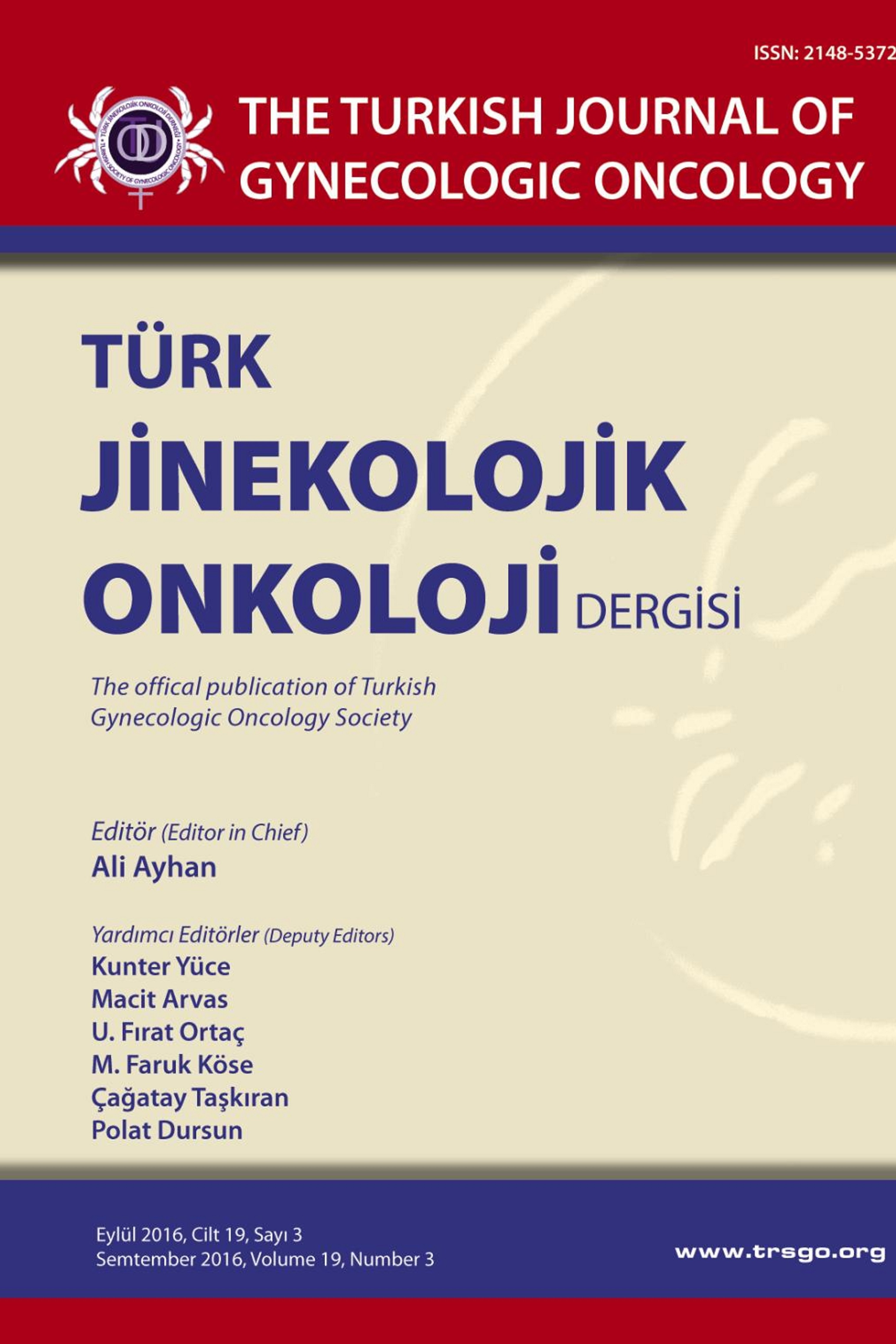Taner TURAN, Özlem KERİMOĞLU, Nejat ÖZGÜL, Burcu AYKAN, Nurettin BORAN, İskender KÖĞ, Gökhan TULUNAY, M. Faruk KÖSE
YÜKSEK RİSKLİ GESTASYONEL TROFOBLASTİK NEOPLAZİDE EMA-CO KEMOTERAPİSİNE BAĞLI TOKSİSİTE PROFİLİNİN DEĞERLENDİRİLMESİ
Amaç: Bu çalışma, yüksek riskli GTN tedavisinde EMA-CO rejiminin toksisite profilinin değerlendirilmesini amaçlamaktadır. Materyal ve Metot: 1994-2004 yılları arasında yüksek riskli gestasyonel trofoblastik neoplazi (GTN) tanısı alan 33 hasta EMA-CO kemoterapisiyle tedavi edildi. 23 hasta (110 kür) EMACO tedavisini birincil olarak (Grup 1), tek ajan metotreksat veya MAC III kemoterapisine yanıt vermeyen 10 hastaysa (49 kür) ikincil olarak aldı (Grup 2). Hastalar kemoterapi süresince toksisite kemoterapi alabilirlik ve cevap açısından haftada bir tam kan sayımı, serum biyokimya, serum b-HCG ve pelvik muayene ile değerlendirildi. Her kemoterapi siklusu öncesinde kemik iliği, hepatik ve renal fonksiyon yeterliliği açısından hastalar tetkik edildi.Sonuçlar: En sık ve en ciddi yan etki hematolojik toksisiteydi. Nötropeni dışında grade 4 toksisiteye rastlanmadı. Hastaların %9.1inde ve kürlerin %1.9unda grade 4 düzeyinde nötropeni gelişti. Mukozit, alopesi ve anemi gelişimi Grup 1de, diare Grup 2de belirgindi. 13 hastada (%39.4) toplam 19 kür (%11.9) toksisiteden dolayı gecikmeli olarak verildi. Toksisite nedeniyle kemoterapi terk edilmedi veya kemoterapi rejimi değiştirilmedi.Tartışma: EMA-CO kemoterapi rejimini birincil veya ikincil olarak almak toksisite profilini belirgin olarak etkilememektedir. Kemoterapi sonrasında gelişen toksisite kabul edilebilir düzeyde olup ve kalıcı toksisiteye oluşmamaktadır.
Anahtar Kelimeler:
EMA-CO, toksisite, gestasyonel trofoblastik neoplazi
Objective: To evaluate toxicity profile of EMA-CO chemotherapy regimen for the treatment of high risk gestational trophoblastic neoplasia (GTN). Materials and Methods: Thirty-three patients with high risk GTN have been treated with EMA-CO chemotherapy between 1994 and 2004. Of these 33 patients 23 (110 courses) received EMA-CO as primary treatment (Group 1), whereas the remaining 10 patients (49 courses) who were unresponsive to single agent methotrexate or MAC III chemotherapy received EMA-CO as secondary treatment (Group 2). Patients were followed by weekly complete blood count, serum biochemistry, β-HCG and pelvic examination in terms of ability to receive chemotherapy, toxicity and response to chemotherapy. Prior to every course of chemotherapy, patients were evaluated in terms of sufficiency of bone marrow, hepatic and renal functions. Results: Adverse hematological side effects were the most common and serious toxicity. There was no grade 4 toxicity, except for neutropenia. Grade 4 neutropenia developed in 9.1% of patients and 1.9% of courses. Mucositis, alopecia and anemia were more common in Group 1, while diarrhea was more common in Group 2. A total of 19 courses (11.9%) have been delayed in 13 patients (39.4%) because of toxicity. However, none of the chemotherapy courses were cancelled or changed. Conclusion: Receiving EMA-CO chemotherapy regimen as a primary or secondary treatment do not seem to affect toxicity profile. Toxicity following chemotherapy was in acceptable range and no permanent toxicity developed.
Keywords:
EMA-CO, toxicity, gestational trophoblastic neoplasia,
- ISSN: 2148-5372
- Başlangıç: 2014
- Yayıncı: Türk Jinekolojik Onkoloji Derneği
